“Alton Barnes was used by the RAF from 1935 to 1945 for flying training (Elementary Flying Training School) including touch and go landing practice and glider training. The airfield was on the site of Brown's Farm and had a mix of concrete taxi ways and a grass runway.
Site of a World War II RAF Relief Landing Ground utilising four grass grass runways. It consisted of a guard room, officers' and sargeants' mess, dining room and quarters, a watch tower with pump house, flight offices, ten hangars including extra blister hangars, a link trainer and compass platform. An anti-aircraft gun was positioned on Milk Hill with accommodation building for the gunners close by.
Tragedy At Alton Barnes Airfield - 1944
On 25 October 1944 a twin-engine Albermarle bomber V1755 took off from RAF Keevil near Trowbridge with a glider on tow. FltSgt Thomas Newton was the pilot and Sgt John Wilson was his navigator. As the two aircraft approached Alton Barnes, the glider lost sight of the Albermarle and began to overtake it, pulling its tail up to a critical angle. The towrope broke and the glider recovered safely to Alton Barnes airfield. The Albermarle dived into the ground at a 70 degree angle killing both crew members on impact.
On 25 October 1997, fifty-three years to the day, a memorial cairn was dedicated and unveiled at the crash site. Relatives and friends of the crewmen attended, as did Royal Air Force officers from RAF Lyneham, Michael Ancram QC MP, and local residents. The stone was unveiled by the pilot's best friend and the navigator's brother. The ceremony was conducted by the RAF padre, and was concluded by an RAF trumpeter playing "Last Post" and a low-level fly-past by an RAF C130 Hercules.”
The structure is guarded by three pillboxes along the A361 Devizes Road. They are airfield variants with two entrances. (There are another two at the far side of the site near the Kennet and Avon Canal). These were obviously thrown up in a hurry, as the construction is not up to normal pillbox standards.








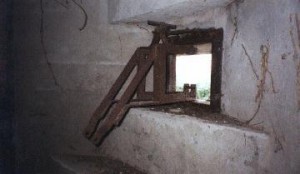








































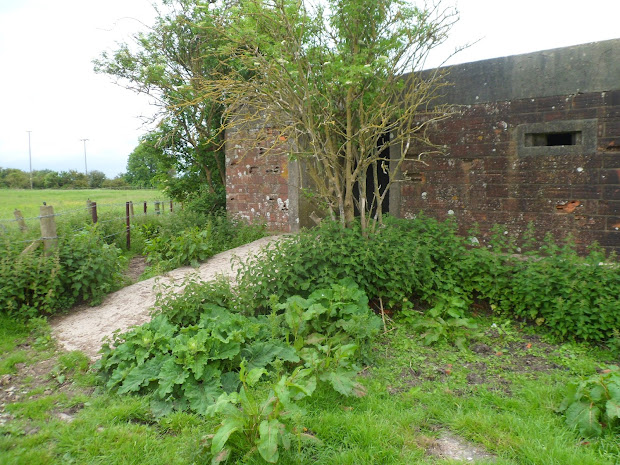























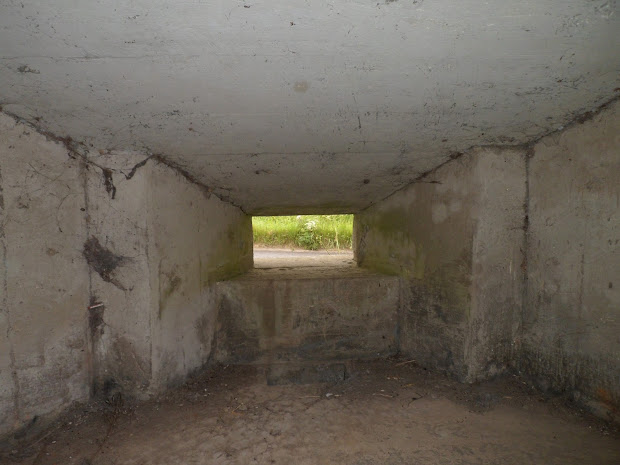











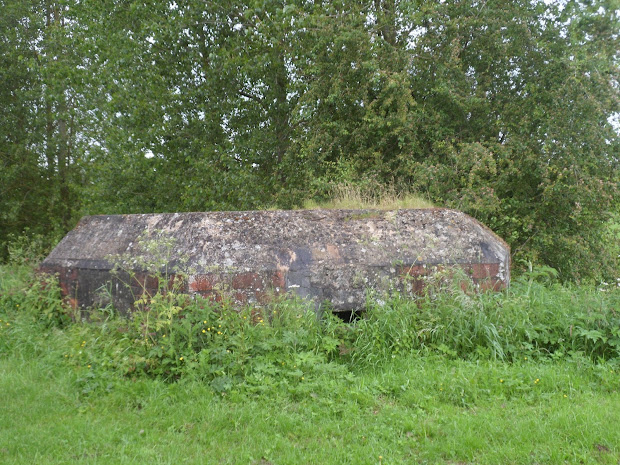


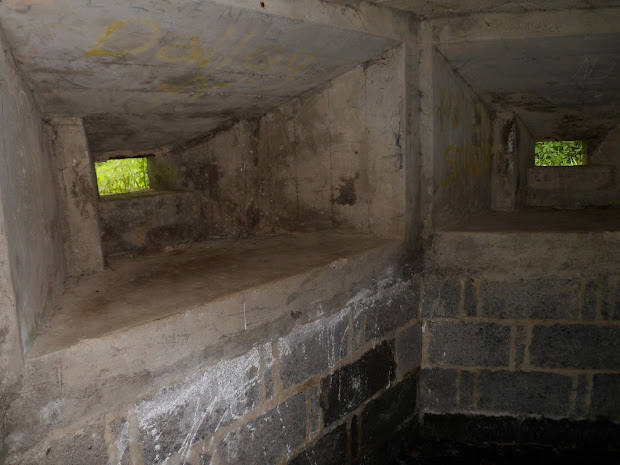







Site of a World War II RAF Relief Landing Ground utilising four grass grass runways. It consisted of a guard room, officers' and sargeants' mess, dining room and quarters, a watch tower with pump house, flight offices, ten hangars including extra blister hangars, a link trainer and compass platform. An anti-aircraft gun was positioned on Milk Hill with accommodation building for the gunners close by.
Tragedy At Alton Barnes Airfield - 1944
On 25 October 1944 a twin-engine Albermarle bomber V1755 took off from RAF Keevil near Trowbridge with a glider on tow. FltSgt Thomas Newton was the pilot and Sgt John Wilson was his navigator. As the two aircraft approached Alton Barnes, the glider lost sight of the Albermarle and began to overtake it, pulling its tail up to a critical angle. The towrope broke and the glider recovered safely to Alton Barnes airfield. The Albermarle dived into the ground at a 70 degree angle killing both crew members on impact.
On 25 October 1997, fifty-three years to the day, a memorial cairn was dedicated and unveiled at the crash site. Relatives and friends of the crewmen attended, as did Royal Air Force officers from RAF Lyneham, Michael Ancram QC MP, and local residents. The stone was unveiled by the pilot's best friend and the navigator's brother. The ceremony was conducted by the RAF padre, and was concluded by an RAF trumpeter playing "Last Post" and a low-level fly-past by an RAF C130 Hercules.”
The structure is guarded by three pillboxes along the A361 Devizes Road. They are airfield variants with two entrances. (There are another two at the far side of the site near the Kennet and Avon Canal). These were obviously thrown up in a hurry, as the construction is not up to normal pillbox standards.

The hardened defences consist of three pillboxes sat along the road as detailed in the above photograph and four sat out on the south side of the farmers fields. One of the pillboxes is sat in the rear of someone's garden and though I managed to photograph this PB as much as was feasible, I never stepped onto the drive to get any possible internals. The others I managed to do so. All the area was taken in on two trips. One when tracking the Kennet and the other specifically to gain access to the pillboxes along the road. also detailed was the BHQ which is circled in blue in the above photo. This in itself is a slight anomaly. Many think this might be part of a Hamiltons Fort but there is not enough depth to recess the retractable pillbox. Having seen the size of a Hamiltons circular base I would personally refute this. As a BHQ - there is no evidence of the usual power fixtures and fittings which are often left as a remnant. Internally it was bare boned but held many old fence posts and barbed wire which in such a tiny crawl space was a tad hazardous to say the least. Dropping down inside and getting out again was fine. The humorous aspect was a person walking their dog thinking i had fallen in and might need some help.
I shall be concentrating first on the upper defences that remain at Alton Barnes and then detail the other remaining buildings and defence structures in another report.
First parking up at the side of the road and walking over to the three pillboxes these were thankfully just overgrown with long grass and not the usual nettles.
PILLBOX (PENTAGON): S0006470
In fairly bad condition but still of real interest. Made using corrugated iron shuttering which is still evident on the internal shots,





Only LMG's were used in Airfield pillboxes and the emphasis on defending and airfield partly relied on a less static form of defence (and resultant blind-spots), were covered by infantry in trenches which were scattered around an airfield. As a result of this many RAF pillboxes had Turnbull mounts such as the example detailed below.
Turnbull mounts were not exclusively used for mounting Vickers machine-guns but Brens, Lewis, water cooled Brownings and Hotchkiss MGs could all be used, there was even a request from Bovington if a gun bar could be designed for there Besa Machine guns. I suspect in fact that Bren guns were the most common weapon mounted (simply because an infantry division held 1,262 Bren guns against only 40 Vickers MMGs) even then I suppose they were only fitted when on alert. Turnbull mounts were issued from 1941 onwards, so those found in C1940 pillboxes were fitted later. Each mount need 4′ 9″ of space between the loophole and the back (baffle) wall to allow the gunner room to position himself behind the mount.
In some instances, the gun mounts and cradles were only installed on the forward and rear loopholes.


An example of a mount and cradle.

A section of the roof shuttering has fallen away.

PILLBOX (PENTAGON): S0006469


Front entrance and on the right - the rear entrance. The internals were mirrored and each has a single ammo storage area sat just inside the entrance to the pillbox.

Rear entrance.

Note the lintel above the ammo storage area.



An example of the roof shuttering in place in the photograph below. Very brittle and sharp, which is to be expected.




A blatant couple of shots of the Vale Of The White Horse.


PILLBOX (PENTAGON): S0006468










The BHQ? Sadly the other chamber was simply too well blocked off to get into.


Having gently eased myself inside for a closer look at the contents.





The remainder of the pillboxes on the southern end of the perimeter which lay close to the Kennet And Avon Canal will be detailed in another report. The remainder of this report concentrates on the defensive line leading up to Horton. As the bike was ever at the ready - this involved cutting back to the Kennet and eventually cycling to the outskirts of Horton. Not too great a distance to be covered really.
ANTI TANK CYLINDER: S0011719
Knowing these cylinders were sat to the side of the road at Stanton Bridge, Kennet and Avon Canal, Stanton St. Bernard it was a case of having to cut away at the foliage to ensure a photograph could be taken. Located on the south side of Stanton Bridge.


ANTI TANK VERTICAL RAIL: S0008740
Southern approach to an unlisted road over the Kennet. This road leads into the southern approach to Stanton Saint Bernard.


PILLBOX (TYPE FW3/28A): S0007918
Continuing over the bridge and sat in the field to the right, the field had jittery horses in the field and despite being followed by one horse for a while and not wishing to scare it too much, it lost interest and ran off.
South-east facing gun embrasure covering the bridge.



Main entrance to the gun ramp.



Sat high on its plinth - this could be evidence that this was/is a flood plain.


PILLBOX (TYPE FW3/22): S0008739
Sat on the north side of the Kennet and one that i couldn't get to on this visit.



PILLBOX (TYPE FW3/22): S0008738
At edge of field alongside minor road, just North of All Cannings Bridge, on North bank of Kennet and Avon Canal, All Cannings. Type 22 pillbox, shell-proof. The pillbox is located on the West side of All Cannings Road to Cannings Cross, with field of fire South and South West to protect all Cannings bridge. Exterior, brick-shuttered. Blast wall. It's reported as being bricked up on the EDoB but this is incorrect information. Access into the pillbox is roadside but heavily overgrown. The Brick-shuttered exterior is deteriorating. Barely visible at a distance.






Exposed Rebar.

PILLBOX (TYPE FW3/22): S0008736
Townsend Farm, The Knoll, North of Kennet and Avon Canal, All Cannings.




Having to play with those damned nettles again.


As with the type 28A futher up the road overlooking All Cannings Bridge, the roof was built instead of poured concrete.

PILLBOX (TYPE FW3/22): S0006647
Finally into the outskirts of Horton. My mate who was a trooper for suffering the eccentricity of a mate whose into pillboxes, taking a breather and enjoying the view.
Located on the southern side of the road and giving protection to the approach into Horton, alone with the 28A sat in the wooded area further down the road, it is southern facing.
The Knoll, N of Kennet and Avon Canal - close to Horton - Allington road.








PILLBOX (TYPE FW3/28A): S0006648
Located in the copse by Horton Chain Bridge It has a large embrasure for a 2pdr. gun facing the canal. This pillbox connects the line of defensive works leading along the canal and eventually into Devizes.


The infantry block next to the main gun embrasure.





PILLBOX (TYPE FW3/22): S0008734
North bank of Kennet and Avon Canal, West of Bishops Cannings. Swing Bridge No.133.






And finally..........
PILLBOX (TYPE FW3/22): S0008735
Testing my own patience to get to this pillbox in a flooded and wet/overgrown field. I was soaked from the knees down by the time i had finished photographing it.






Thank you for reading the the report.
Thanks for posting this info. I came across the group associated with RAF Alton Barnes on a walk recently and found your report looking for more details.
ReplyDelete